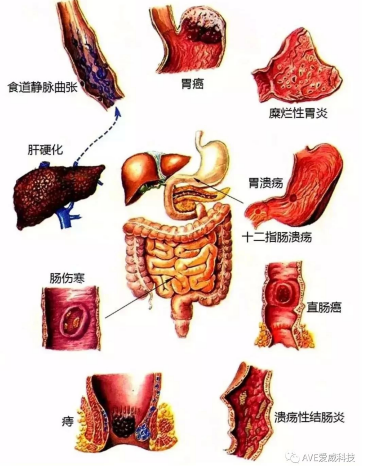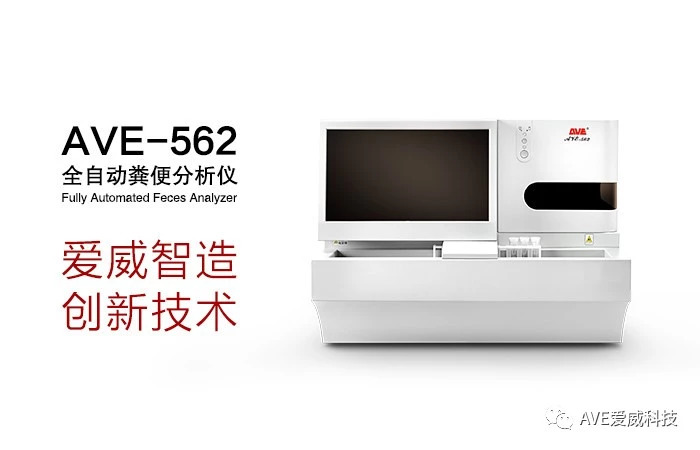

Overview of gastrointestinal bleeding:
The digestive tract is mainly composed of tissues and organs such as human esophagus, stomach, duodenum, jejunum, ileum, cecum, colon and rectum.Gastrointestinal bleeding disease is a very common syndrome in medical clinics. Clinical symptoms include upper and lower gastrointestinal bleeding, which can be caused by a variety of chronic diseases.Among them, upper gastrointestinal hemorrhagic disease refers to bleeding symptoms in the esophagus, stomach, duodenum, pancreatic duct and bile duct of patients.Lower gastrointestinal bleeding refers to blind, knot, and rectal bleeding in patients. There are many high-risk predisposing factors for digestive tract hemorrhagic disease, and the pathogenesis is very complicated. It can be induced not only by digestive tract inflammation, mechanical damage, major organ vascular disease or even malignant tumor, but also due to accumulation of tissue and organ lesions adjacent to the digestive tract,which leads to morbidity.When the amount of upper gastrointestinal bleeding is less than 5 mL, blood is not visible by naked eye; when the red blood cells are damaged, red blood cells are not observed by fecal microscopy, at this time, only the fecal occult blood test can prove the presence or absence of bleeding.
In clinical practice, fecal occult blood test is a common screening index for early diagnosis of gastrointestinal digestive hemorrhage, chronic gastrointestinal bleeding and malignant tumor. Its theory and detection technology which are mature, has good detection effect and reference value.

Chemical fecal occult blood test:
At present, some hospitals still use chemical methods.Commonly used o-toluidine method, reduced phenolphthalein method, benzidine method, pilamid method, guaiac gum method.
The experimental design principle are basically same, based on the hemosiderin in Hb, which has the function of catalyzing the decomposition of peroxide, can catalyze hydrogen peroxide in the reagent,decompose and release new ecological oxygen, oxidize the above-mentioned chromogen and color generate. The depth of the color reflects the amount of hemoglobin.
However,in practice,due to the large difference in fecal composition,the specific operational details of each laboratory are different,the results are quite different.
Moreover,chemical methods lack accuracy and specificity. Exogenous foods containing Hb, myoglobin, the role of hemoglobin can make the experiment positive, a large number of raw vegetable vegetables containing active plant peroxide can also catalyze the decomposition of H2O2, to generate positive reaction.The blood stays in the intestine for too long, and Hb is degenerated, and there is a negative result that does not match the condition.
In addition, if the patient takes a large amount of vitamin C or other reductive drugs, in experiment, the hydrogen peroxide will be reduced, so that the chromogen can not be oxidized, and the fecal occult blood test will be false negative.
Immunological occult blood test:
The monoclonal antibody method combines anti-human Hb or anti-human erythrocyte matrix antibody with colloidal gold,to detect trace amounts of hemoglobin, which is more sensitive to human asymptomatic micro-bleeding of the digestive tract, and the monoclonal antibody method is not affected by food, meat, etc. Interference, with strong specificity and sensitivity.
But the immunization method still has imperfect aspects. Normal human gastrointestinal physiological blood loss is 0.6mL in 24h,due to the high sensitivity of immunological methods, and due to normal physiological blood loss,some normal people, especially after taking drugs that stimulate the gastrointestinal tract can cause false positives.
In addition,the monoclonal antibody method is mainly used to detect lower gastrointestinal bleeding, and some cases of upper gastrointestinal bleeding may be missed.There are three reasons for this:
First, hemoglobin or red blood cells have no original immunogenicity after degrading or digesting by digestive enzymes. second,excessive hemorrhage causes premature phenomenon of excess antigen in the reaction system.thirdly, the patient's antigen of hemoglobin does not match the monoclonal antibody.
Chemo-immunoassay fecal occult blood test:
Compared with single-use immunoassay and chemical method,the chemical-immune combination method can reduce the false negative of the immune method, reduce the missed detection of the chemical method,improve the sensitivity of the diagnosis and the detection effect.The detection effect is significantly better than separate use of the two detection methods.
Fecal occult blood and transferrin rapid test:
Large amount of transferrin can be found in the feces when the digestive tract are bleeding. Studies have shown that transferrin is more stable than hemoglobin in feces.
There was no significant change in antigenic activity between transferrin and fecal suspensions after incubation at 37℃ for 4 h, while hemoglobin antigen activity lost 65%.
It can be seen that transferrin has the specificity of gastrointestinal bleeding and stability against bacterial decomposition, and is a good indicator for detecting gastrointestinal bleeding.The transferrin method can complement the hemoglobin method to detect defects in upper gastrointestinal bleeding.
Therefore,combined detection of hemoglobin and transferrin in feces test,combine.is the best method for detecting gastrointestinal bleeding.
At present, AVE-562 fully automatic feces analyzer has been widely used in clinical practice. The feces sample can be tested on the AVE-562 for appearance, traits, microscopic examination and fecal occult blood detection. It is convenient and fast, can meet the demand of preliminary diagnosis of gastrointestinal bleeding in hospitals at all levels.The test results have a high coincidence rate with clinical results. which can provide valuable evidence for clinical diagnosis.

